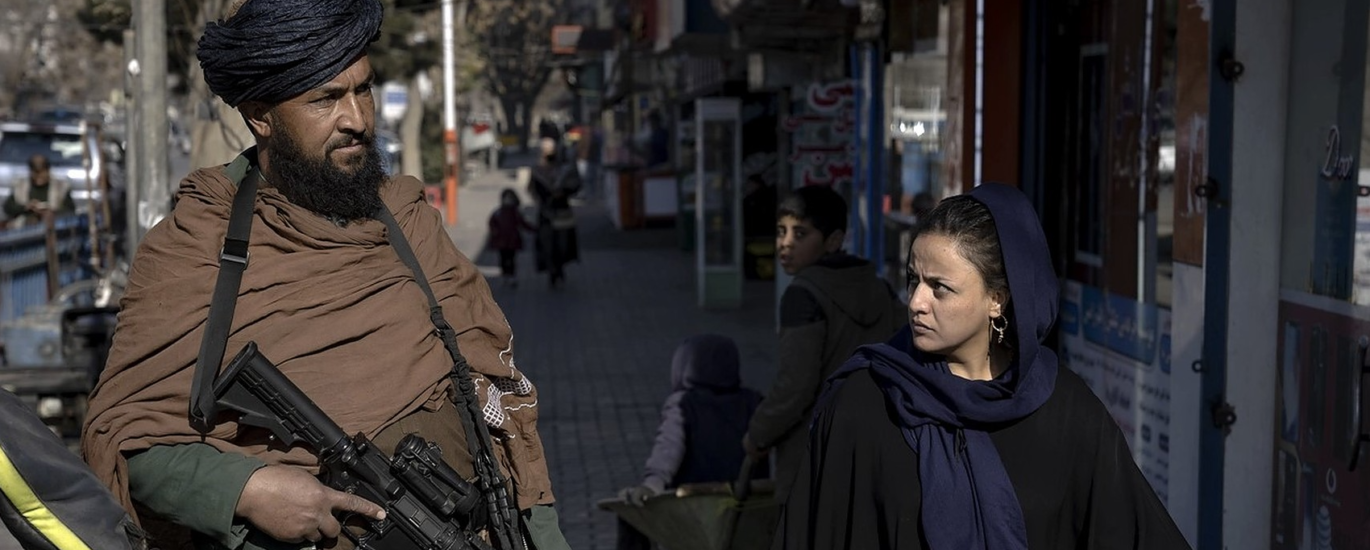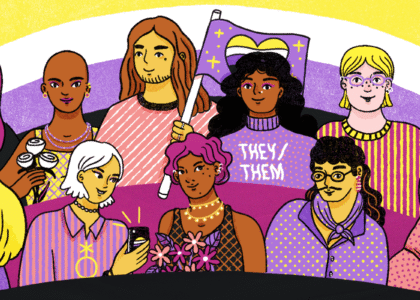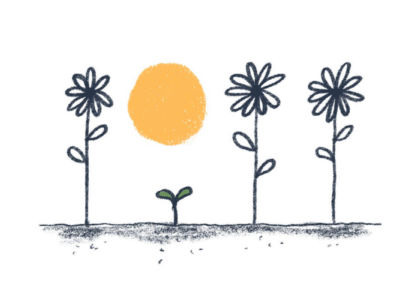“it’s Afghan women against the world”
Amy is joined by Dr. Bahar Jalali to discuss the history of Afghanistan and how the country’s past, as well as global politics, shape the lives of Afghan women today.
Our Guest
Dr. Bahar Jalali
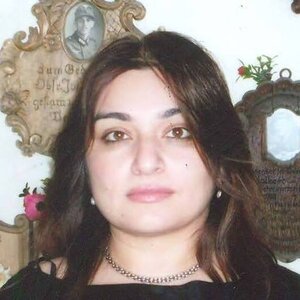
Dr. Bahar Jalali teaches the history of the Modern Middle East. Her area of expertise is Afghanistan. She focuses on modernization and women’s rights in the twentieth century under the Old Regime. She is currently finishing a manuscript on the Decade of Democracy from 1963-1973 in Afghanistan when an urban educated intelligentsia spearheaded democratic reforms and a liberal Constitution. Born in Afghanistan, she fled the country as a child after the Soviet invasion. In 2009, she returned to Afghanistan to work at the newly opened American University in Kabul where she taught History of Afghanistan and founded the first Gender Studies program in the history of the country. She recently started an online protest campaign calling for protection of women’s rights and preservation of cultural heritage in Afghanistan. This campaign has received extensive coverage in the international press. It has also triggered wide- ranging discussions on protection of human rights and cultural heritage in Afghanistan under the Taliban regime.
The Discussion
Amy Allebest: Can you remember how old you were when you first became aware of the country of Afghanistan? Maybe you remember Afghanistan being the site of a conflict between the United States and Russia? For me, personally, I didn’t really know anything about the country until September 11th of 2001 when average American citizens suddenly became aware of something called the Taliban. And, along with the rest of the country, I suddenly learned a lot of information about the country over the next couple of decades, but all filtered through Western media, never from Afghans themselves or anything that was really Afghanistan-centric.
My personal connection to the country began in the fall of 2022 when our family met a family who had recently immigrated to the US as refugees from Afghanistan. The dad of the family had fought as a soldier against the Taliban. So in 2021 when the Taliban entered the province where they lived and took over, this family fled for their lives and thankfully they were able to get help from the US government as they needed passports and flights and re-settlement for their family.
They have five kids, ages 10 down to eight months, and our family helps them with whatever they need. We’re kind of their contact people here in the US and we spend most Sundays with them, and we really, really love this family. We’ve become great friends. And sometimes when I look in the faces of their three little girls, I imagine what life might have been like if they had stayed in Afghanistan. I keep reading about the restrictions that the Taliban has placed upon women again. And the first time I went over to their house, I met them and hung out with them for a couple of hours and then I cried all the way home in the car because suddenly the stories that I had been reading in the news were suddenly very, very real to me.
At the same time, the last time that we were at the family’s house, just last week, their kids were telling me in their rapidly improving English, all the things that they used to love to do when they were back at home. And they kept saying, “Afghanistan good. Afghanistan good.” And I learned all about how Afghanistan has the best watermelons in the world and they showed me videos of farmers growing watermelons in their home province surrounded by green grass and trees and rivers (which I hadn’t pictured green grass and trees and rivers when I pictured Afghanistan). Then I asked them what they used to like to do when they were at home and they just lit up saying they loved to ride their bikes and they loved to swim and they missed their friends. And then I cried all the way home again that day, but for a different reason. I was reminded of something that I’ve learned over and over this season: that in places where people have encountered massive injustice and oppression and violence, those people are incredibly resilient and strong, and everywhere on this earth children love to ride bikes and swim and eat watermelon and play with their friends.
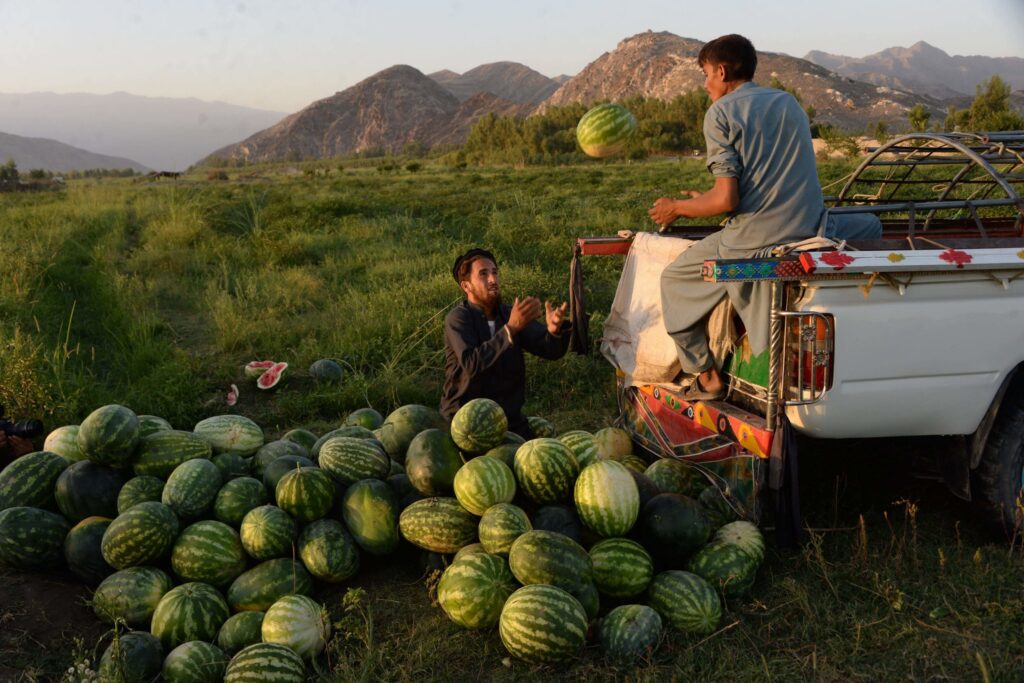
Every culture is complex and beautiful and can’t be described with just a single story, especially when that story is told by someone on the outside. And so today I’m really honored to present a complex picture of Afghanistan and the gender dynamics in that country, and I am deeply grateful to welcome to the podcast Dr. Bahar Jalali who will share her expertise and her personal experience.
Welcome, Bahar.
Bahar Jalali: Thank you Amy. Thank you for having me. Pleasure to be here.
AA: I’m so excited to have you share, really, like I said, your professional expertise, but also your personal experience. And I wonder if you could start us off by telling us about yourself, where you grew up, your family of origin and education, and your professional career as well.
BJ: Sure. I was born in Afghanistan, and when I was only four and a half the Soviet Union invaded Afghanistan. Shortly afterwards, me and my family fled to the United States where I grew up and where I was educated. And so my earliest childhood memory was of Russia, war, invasion – those were very vivid childhood memories for me. But I also remember in Afghanistan, that was at least in Kabul (the capital where I was born and spent the first years of my life), I remember a country that was moving towards urbanization, modernization.
Growing up in the United States, it was a little difficult having this hybrid identity of being Afghan, and being an American, having that immigrant background of being born in a foreign country. I remember when we first moved to the United States, most people hadn’t even heard of Afghanistan. Or you know, if they ask you where you’re from, you said Afghanistan…well, they didn’t even know that it was a country. And so growing up and trying to navigate that dual identity was very difficult. And then when I went to– I grew up in the DC area, I went to the University of Maryland. Then for graduate school I decided to study Middle East Studies, and that’s when I began to take an interest in learning about Afghanistan academically at the University of Chicago and UC Berkeley. And so that’s how I got into Middle East Studies.
I got my MA and PhD in that field, and then in 2001 as I started my PhD program, that’s when 9/11 happened. 9/11 happened right at the beginning, the first week of my PhD program. By that point I had already written my master’s thesis on Afghanistan and, of course, the media was depicting Afghanistan as this “terrorist haven”. And of course the Taliban… I mean, I think it’s important to remember that the Taliban are not an indigenous Afghan movement; it’s a proxy force of Pakistan. And so it’s very, very difficult when Afghanistan and the Taliban are always in the same sentence because I think the overwhelming majority of people are not aware that this is not a movement that’s homegrown in Afghanistan.
So that’s what really made me even more passionate about pursuing Near Eastern studies. And so I decided to write my doctoral dissertation on 1960s Afghanistan, a time when my parents’ generation, when Afghanistan was governed by a secular ruling elite, when women got the right to vote and a liberal constitution was adopted in 1964. It was my way of trying to counter the narrative that this is a country that’s always been stuck in time. That it was a hermit kingdom, always isolated–those typical orientalist tropes. And, you know, Afghanistan, even within academia, is a very understudied country and region.
I remember at Berkeley, it was a bit of a challenge to make a case for why this was worthy of a doctoral dissertation. I felt like I almost had to justify why I was doing that. So even within and in and out of academia, I felt that Afghanistan remained this kind of enigma…and it’s really not an enigma. And so that’s how I entered academia and ever since I graduated I’ve taught courses on Afghanistan’s history.
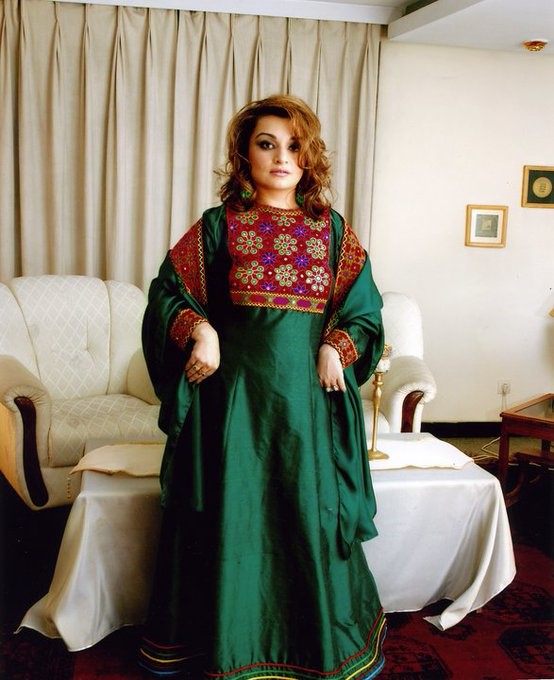
But in 2009 I returned to Afghanistan. And it was a country that looked nothing like my childhood. It was a country that I didn’t feel I was even born in because it looked so different when I left. And I began teaching at the American University of Afghanistan. And initially I thought I was gonna do that for one or two years. It ended up being eight and a half years where I taught courses on the history of Afghanistan. In 2015, I established the first Gender Studies program in the history of Afghanistan. It was probably the most rewarding experience I’ve ever had in my life because not only was I teaching something I love, but I was like educating a whole new generation that did not want war to be the future for Afghanistan and for their country.
Then in 2016, the university was attacked by the Taliban. I’m a survivor of that attack, but I lost colleagues and students. Shortly after that experience in 2017, I decided to leave for security reasons and my family was like, “you’ve done your part, you’ve given back to your home, your birth country…too risky to remain there.” And so I left in 2017, but I continue to teach courses on Afghanistan. I continue to participate in programs that raise awareness about Afghanistan, especially in trying to deconstruct these stereotypes about Afghanistan as a country full of xenophobia, a country where modernization is alien to its culture. It’s very ahistorical, number one, but number two, it just kind of goes along with those standard orientalist tropes about the Middle East, about Asia, Islam, or what have you. So, I feel like my personal life experience has kind of become a big part of my professional life.
AA: Thank you so much for sharing that, and I’m so sorry to hear about the attack in 2016 and to know that you lost people who are dear to you. Was that a bombing at the university or what happened?
BJ: It was a complex attack. Suicide bombers detonated their explosives, and that’s how they managed to infiltrate the campus. Once inside the campus, they resorted to all types of different attacks, like they were throwing grenades into the classrooms. They were shooting anybody that they could within sight. And so it was a complex attack, and of course it was not only an attack on the university, it was an attack on the future of Afghanistan.
One of the ways that you try to win a war or make the other side lose, is that it was also a bit of a psychological war. When you keep a country– when education becomes inaccessible, that’s how you destroy a country and that was basically their tactic. Now, I did decide to return for the reopening of the university shortly after the attack. But then I just felt that it was time to move on for a number of reasons.
AA: Wow. Again, I’m so sorry to hear that. One more question that I wanted to ask before we dive into Afghan history is just where you teach now, and what is the work that you do right now in the United States?
BJ: I teach at the Loyola University of Maryland, and I teach in the history department and I teach courses on Middle East History, Women, and Gender in the Middle East. I’ve taught a course on the history of Afghanistan and I’ll be teaching a course on Iran. So mostly I’m the Middle East historian there.
AA: Oh, fabulous. Well, we will try– I want to talk fast so that we can get all of this library of experience and knowledge into this episode. So I’d like to start actually, if you could kind of lay the land for us and give us some context and go back to kind of the earliest humans that lived in what is now Afghanistan? Tell us a little bit about even just where it is on the map and who’s lived there and what are some major landmark events and phenomena throughout Afghan history.
BJ: Afghanistan has a very unique geography. It’s located at the confluence of four different regions. So, there’s a very famous label attached to Afghanistan called ‘the Heart of Asia’ because it’s right in the center. Up north it borders the Middle East through a border with Iran, it borders South Asia through a border with Pakistan, and then of course it borders East Asia through a small border with China. And then also it borders the Central Asian states. So it’s very difficult to put a geographic category on Afghanistan because it is really at the confluence of four different geographical zones.
Traditionally, you know, in most Atlas it’s listed as South Asia or Central Asia, sometimes even part of the Middle East. But it’s very difficult to put a label on Afghanistan. It’s a very diverse, multi-ethnic country. And the first time that we really hear about anything that could refer to Afghanistan in recorded history is during the Persian Achaemenid period, where Afghanistan was part of that Persian empire. Throughout centuries, Persians, Greeks, Mongols, Turks have ruled over Afghanistan, making it a very, very, very diverse region. Of course, Islam came to Afghanistan in the 8th century. And of course the most important date in the history of Afghanistan is 1747: the middle of the 18th century when it emerged as a distinct political entity.
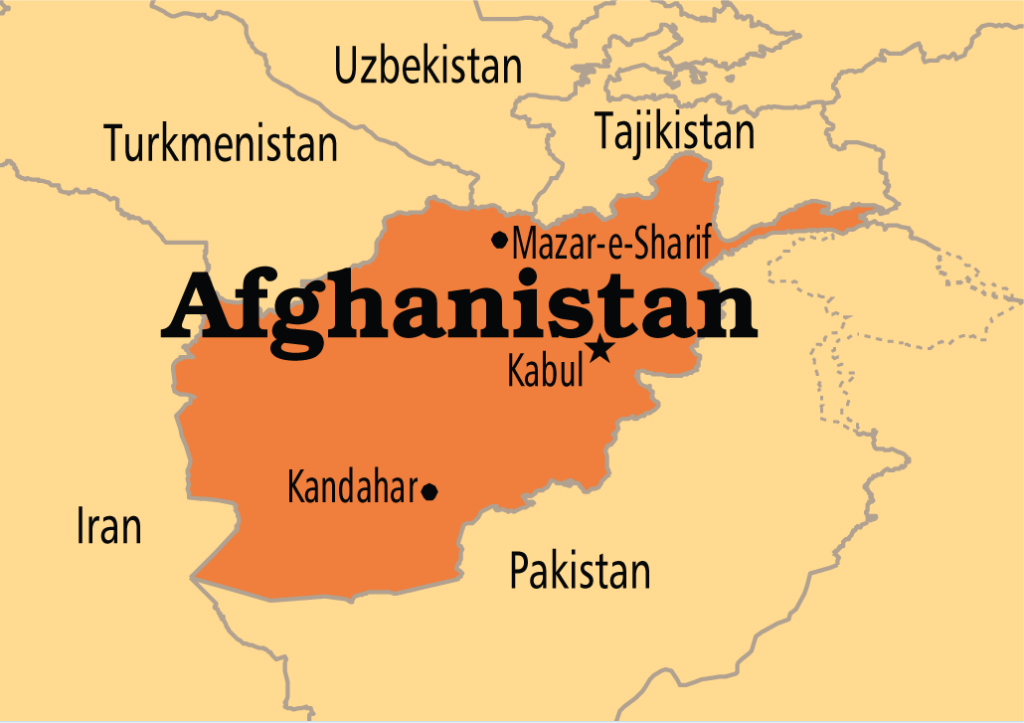
So there was no place on world maps called Afghanistan before 1747. That’s when Afghanistan as a political state first emerges. And what it does is that when it becomes really a political entity you see different parts of the country– so parts of Afghanistan were once ruled by the Indian Mughal Dynasty (it’s actually a Turkic dynasty), other parts of Afghanistan were ruled by the Persian Dynasty (the Safavids), and other parts by the Central Asian Khanate. So you have these divided regions, which become unified and become Afghanistan in 1747.
Now Afghanistan is a multi-ethnic country, but the ethnic group that founded Afghanistan and that ruled over the country and made up the dominant political class for most of its history were the Pashtun ethnic group. The Pashtun are an Indo-Aryan ethnic group. And then you have the Tajiks (also an Indo-Aryan ethnic group similar to the Pashtuns); you also have Tajiks, of course, in Iran and Tajikistan. And then you’ve got the Hazaras, and according to some historians they are the descendants of Chinggis Khan that invaded the Middle East in the 13th century. Now that genealogy is disputed by some scholars, but most Hazaras do have a very East Asian appearance, which makes them stand out in Afghanistan compared to the other ethnic groups.
Now, Hazaras ever since the late-19th century have been a heavily persecuted and discriminated group in Afghani society. A lot of it has to do with the fact that they’re easily distinguishable–their East Asian features–but also that they are adherents of the minority sect of Islam, Shia Islam. In Afghanistan is the dominant sect of Islam is Sunni Islam, so they face both racial discrimination and religious discrimination, sectarian discrimination. And then you’ve got Turkic ethnic groups: Uzbek, Turkmen, Kyrgyz. And then you’ve got other ethnic groups: the Nuristani, the Pashai.
So we’re looking at a very, very diverse country in terms of ethnicity. Nowadays ethnicity and identity politics have become so politicized that oftentimes when scholars and ordinary people talk about ethnicity in Afghanistan they talk in terms of very rigid social hierarchies and of course that existed, but ethnicity was also very fluid in the sense that you saw intermarriage between different ethnic groups. You saw relationships. A lot of this ethnic politics that has emerged has been a symptom of almost five decades of war in Afghanistan and how neighboring countries have had their internal climates and how that has also amplified the ethnic tensions, which of course were always there, but has made it appear as if this was always a burning issue in Afghani society, where it was much less pronounced in a peacetime Afghanistan.
Now what makes Afghanistan very unique today is that ever since 1978, it has been a country that has not seen peace. We’re looking at almost half a century. A country that has been at war for almost 50 years– it’s important to remember that that would not have been the case if you didn’t have so many different regional and global powers intervening inside Afghanistan. Afghanistan today is a broken state. Many call it a ‘failed state’, but it’s important to understand that how we got there is the result of multiple powerful political actors who have been engaged in Afghanistan. There is no way that Afghans could have done this much damage on their own as a poor country with limited resources.
So that’s what makes Afghanistan unique. When we say, you know, what’s problematic in the narrative on Afghanistan is that this is a failed state, this is a broken state, they can’t get it together…Absolutely, Afghans share a very large share of the blame in this terrible situation, but it is very, very important not to underestimate the role and participation of global actors, especially in the 1980s when Afghanistan became a battlefield of the Cold War between the Soviet Union and the United States.
One thing I forgot to mention is that in the 19th century, Afghanistan was really one of the epicenters of the ‘Great Game’, which was a geopolitical competition between imperial Russia and Great Britain for influence in Central Asia. That’s really how Afghanistan emerged as a state in the late-19th century. So 1747 is the first, most important date in modern Afghan history. The second is probably 1880, when Afghanistan emerges as a modern state with clearly defined boundaries and as a buffer zone. I mean, the reason why Afghanistan has the borders that it does today is because of the Anglo-Russian rivalry that led Afghanistan to become a buffer zone.
So it’s a country that’s very diverse, but it’s also a country that many consider to be irrelevant or isolated. But when you look at the history of Afghanistan in the past 150 years, it has been invaded by three superpowers: first Great Britain in the two Anglo-Afghan wars of the 19th century. Then of course the Soviet Union in 1979, and then the US in 2001. It’s really very much an international country on the contrary. And so I think the reason why we are where we are today is that it’s a country that has always seen intervention by major powers.
A lot of this ethnic politics that has emerged has been a symptom of almost five decades of war in Afghanistan
AA: One other thing that I wanted to ask you about is from an article that I read by a professor at UC San Diego. I read an article about the kind of gendered history of Afghanistan and she mentions a few different rulers of Afghanistan and kind of a back and forth of women’s rights. Can you talk a little bit about that?
BJ: So formal rights for women can be traced to an era of Amir Abdur Rahman Khan in the late 19th century. That’s the very first time that you see a government of Afghanistan formally recognizing women’s rights which included things like allowing women to sue for alimony divorce. Now, divorce, of course, is enshrined in Islam, but it’s heavily stigmatized in Afghanistan. And that’s because Islam spread very rapidly outside of Arabia and, in each culture where Islam spread to, it kind of mixed in with the local culture. So Amir Abdur Rahman Khan was basically trying to give women rights that were enshrined to them within Islam, but also trying to free women from some of those onerous Afghan customs.
For example, there’s a custom in Afghan society that when a woman becomes a widow, she must marry her brother-in-law. The logic behind is that she will have a caretaker, and in a heavily patriarchal society a woman cannot remain single without a caretaker. Right? And also in a country like Afghanistan, how is she going to survive economically if there was a man to take care of her? But it’s also a very oppressive custom because what if you don’t want to marry your brother-in-law? What if you’re not attracted to him? What if you’re grossed out by the idea, or for whatever reason they may be, right? And to defy that custom was– it could bring up a lot of hardship to women.
So that was one custom that Amir Abdur Rahman Khan– he made a conscious effort, he did ban it. So as you could see, Amir Abdur Rahman Khan was a controversial figure in that he forcibly pacified Afghanistan through very violent means, but at the same time, he’s also the first feminist leader of Afghanistan and he was a man. So, you know, he was a very complex figure, but it’s also important to understand that these decrees that he issued probably had very little to no application in society. And even if they did, it was probably only confined to a small elite within the capital city, urban areas. But I do think that these are not just symbolic measures, right? It really helps to debunk the idea that there’s never been any kind of indigenous reform movement in Afghanistan– that Afghan men, Afghan leaders, have always been inherently misogynistic.
Amir Abdur Rahman Khan also interestingly tried to neutralize and curtail the power of the religious establishment, the power of the Islamic clerics. And he was quite successful in that. He stripped them of their economic independence. He made them state bureaucrats. He made them dependent on government policies. But unfortunately, his successor and his son Amir Habibullah, who ruled from 1901 to 1919, he’s credited with starting the era of modernization, but yet he reversed some of those liberal policies of his father. For example, he repowered religious establishments who were often opposed to these decrees, these kind of feminist decrees that Amir Abdur Rahman Khan issued.
But at the same time we do see women emerging into public life, right, with both Abdur Rahman and with Amir Habibullah? So, I think that’s important. If you take a look at the photos of Amir Habibullah in the early early 20th century, and you see him with his wives and his family…you know, the way they’re dressed, it could be the royal family of Germany or somewhere like that. And nowadays we live in a time where clothing has also become very politicized. Well, just because they’re wearing Western type clothing, does that really make them modern or does that make them sellouts? I do think that it is important. It’s more than just symbolic because it really demonstrated that the Afghan rulers were not isolated country bumpkins. They were in tune with the times. They were aware of what was going on in the world and they were much more sophisticated than they are portrayed.
Then of course, from 1919 to 1929 is when we have the most popular and most famous Afghan reformer King Amanullah who tried to radically modernize Afghanistan–so something some have called shock therapy. King Amanullah has his admirers and has his detractors, and a lot of people have blamed him for going too fast and attempting to implement very radical reforms that Afghanistan was simply not ready for and did not have the prerequisites for. But when we look at some of his reforms: for example, he’s the one who established the first girl schools, so he formalized female education. He came up with a new system of administrative laws, a new law code which stated giving women vast rights. He banned polygamy among government officials. His wife, Queen Soraya, was one of the first Muslim women to be seen without a veil in Western countries. He went on a long global tour of Europe and the Middle East, his wife accompanied him. If you look at the images from that period, they both look very, very elegant. They both look like a happily married couple.And then of course, he came up with Afghanistan’s first constitution and the economic reforms, modern reforms, the implementation of modern schools.
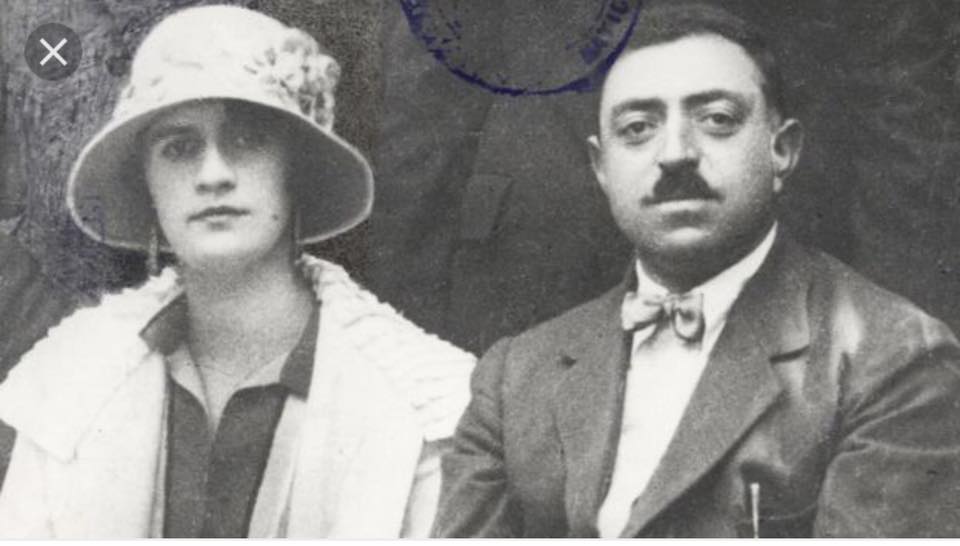
Unfortunately, his vast program of reforms have kind of been overshadowed by some of his more hasty reforms. For example, when he traveled to Europe, he was shocked by how behind Afghanistan was and so he came back to Afghanistan really kind of emotionally charged. One of the decrees he came up with was, well anyone living in Kabul, the capital of Afghanistan, or visiting Kabul must wear Western clothes. So that was a little capricious, right? And that was something that could easily undermine his very significant program of reforms.
Of course he had plenty of enemies who kind of misrepresented what he was trying to do. So, although in 1929 he was overthrown by reactionary forces and although it is true that a lot of what he was trying to do was hasty, his reforms set a very very powerful and enduring precedent. And his successors continued many of his reforms. So whenever we look to women’s rights or bringing women into the public sphere, formalizing education for women, we have to look back to the period of 1919 to 1929.
Now, when King Amanullah was overthrown, a new dynasty was established which actually continued modernization, but at a much slower, more gradual place. By the 1960s that more gradual modernization did begin to have impact because in 1959 Prince Daoud (who was from that new dynasty: the Musahiban family) he abolished mandatory veiling. But one thing he did more successfully than King Amanullah was that he did it in a very low-key, very strategic manner. He didn’t have all of these public campaigns to unveil. He didn’t do it very explicitly. So basically in 1959, during one of the national holidays, the women of the royal family emerged publicly without any veil or any type of head covering and in a very, kind of matter of a fact way, like “this is it, right?”
There was no public announcement. There was no publicity. It just happened. Nobody talked about it. Nobody said anything. But here we go. Here come the women of the royal family and nobody’s wearing a veil. And everybody was shocked. But it was also a non-verbal statement that any woman who does not want to wear the veil will receive government support.
And so from that time onwards, what we see is that we see a slow but steady movement to– I wouldn’t call it a movement, but just a slow but steady development of women emerging into public life. And in 1963, of course a new era was dawned in Afghanistan: the decade of democracy where women’s suffrage was formally enshrined in the 1964 Constitution. In 1965, the first women were elected to parliament. The first woman was appointed to a cabinet post, minister of public health. And, you know, that was a time that– it was my parents’ generation. My own mother got married in 1969 in a mini skirt, but people often say that a mini skirt is not a symbol of reform and modernization. Well, that’s fair enough, but I think it’s important to understand that Afghanistan was a conservative society, but the fact that women could dress–wear a mini skirt and not fear harassment or judgment, and coexist with women who were more conservative or who were more covered–that says something about the emerging pluralism that was developing, at least in Kabul.
Now, this was a country that had only been modernizing for decades, and by the sixties you see some pretty impressive reforms. Of course they were limited to the urban areas, but I’m pretty sure that if we didn’t have the Soviet invasion and the beginning of decades of war, gradually those reforms would have spread to the rural areas. Because my own mother, she studied all over the country because her father was a civil servant, she lived in all the different provinces of Afghanistan and she says “I could wear a mini skirt in Kabul, in Kandahar, in Herat, and nobody said anything, nobody cared.” I’ve seen her pictures! And so, it says something about the mentality that this was not a country that was always extremist or radical.
But in the sixties, you do begin to see an Islamist movement emerge. That was kind of more influenced by developments of the Muslim Brotherhood. Many of the members of the Afghan Islamist movement had studied in Egypt, they had been influenced by more radical ideologies, but that movement was not embraced at all in the sixties by mainstream Afghan society. Then by the seventies you have continuing liberalization. So, from 19– I would say from the time of Abdur Rahman Khan in the late-19th century, all the way to 1978 (which was the fall of the old regime) you have different degrees of modernization, but it was an unbroken chain of modernization.
Obviously, it began with Abdur Rahman. There were modest degrees with Amir Habibullah Khan, beginning of modernization and then in the twenties you have this earth shattering reformer come to power, King Amanullah, who failed in his bid to radically modernize Afghanistan, but left a very powerful legacy. And then from the 1930s to the late 1970s you have a steady period of peace, but also accompanied by gradual modernization. Then, of course, in 1978, you have the fall of the old regime. You have the communists come to power who implement very drastic policies that are met with a very, very fierce backlash by conservative forces, the mujahideen, the Islamist forces. But those Islamist forces would not have succeeded in culturally transforming Afghanistan had it not been for all the outside assistance they received. The transformation of Afghanistan from a country that was modernizing that became more dominated by conservatives, was circumstance of war and the geopolitics of foreign intervention.
AA: Yeah. Could you say a little bit more about that? When the Soviets came in and I’m just– honestly, I haven’t studied this, but I’m assuming, because I know that Soviet policy was more egalitarian, at least in terms of gender–so I’m guessing when they came into Afghanistan did they push things too far for the conservatives? Are you saying like, kind of the Islamists who were getting more power reacted strongly against that part of the Soviet culture?
BJ: Yeah, so it’s a little complicated, the modernization policies that were being implemented by the old regime. It’s important to understand that the royal family had a lot of political legitimacy in Afghanistan. So even if they were doing something that was perceived to be radical, nobody questioned their legitimacy, right? But in 1978, the old order, the old regime is gone and we have these communists with no political foundation in Afghanistan.
Number one, they have no popular support in society. They have no administrative competence. They don’t know how to run a country. And number three, they resort to immense violence to stay in power. That was a regime that was not going to survive in Afghanistan for all the reasons that I mentioned. And so what they do to survive is they implement a reign of terror. Eventually the Soviets realized that the only way the communist regime is going to survive in Afghanistan is if we supported it militarily, and so the communist regime begged the Soviet Union to support it with combat troops, to formally occupy Afghanistan.
Also in the communist regime there was a lot of infighting. It was a very unstable regime. So the Soviets invade, and yes, of course, from 1978 to 1992 when the communists were in power you don’t see–formally in the areas where they were able to control in Afghanistan–you see the continuation of what you had since the twenties, thirties, forties, fifties, sixties and seventies, right? Because the Afghan communist regime was so unpopular, so brutal, so incompetent that the overwhelming majority of the Afghan population rejected it. Also the resistance to the Afghan Communist Regime were heavily armed and funded by the United States, and so that empowered them enriched them immensely.
The transformation of Afghanistan from a country that was modernizing that became more dominated by conservatives, was circumstance of war and the geopolitics of foreign intervention
Now, who was the resistance to the communist regime? Their leaders were the people who founded the Afghan Islamist Movement in the 1960s, which was a movement that was completely out of sync with mainstream Afghan society. So you have a marginalized group that suddenly becomes empowered and enriched through the CIA as part of their counter interventionist policy to defeat the Soviet Union, as part of the Cold War. So that’s what I mean is the geopolitics has really had a huge impact on women in Afghanistan because indigenous Afghan regimes for much of the 20th century in various degrees did promote modernization. It was not like France or England, but it was a country that was slowly but steadily moving in that direction. And with the occupation of Afghanistan by the Soviet Union and the involvement of the US, you begin to see the empowerment of very reactionary forces in Afghan society, forces who were hitherto really marginalized groups.
That’s when you begin to see in the 1980s a cultural transformation take place in Afghanistan where, once the Soviet Union withdraws from Afghanistan, once the war is over by 1992, these were now considered the heroes of that war. The Islamic resistance to the Soviet occupation; they consider themselves the winners, the liberators of Afghanistan. And so when they come to power in 1992, they implement policies that never existed in Afghanistan before related to women like controlling women’s movements in the public sphere, banning women from working in radio, something called criminalizing running away from home. So if a woman ran away from home–let’s say she’s being abused by her parents, or she refuses to enter into a forced marriage–she runs away from home. Something like that began to be criminalized in 1992.
Unfortunately some of these reactionary forces have been empowered by major superpowers like the United States, the regional countries. So many–Saudi Arabia, Pakistan, Iran–have been involved by funding and arming their own different Afghan groups that hold very reactionary views. So, I do believe that life for women was much better under the old regime. I mean, I’m not saying it was great, but relatively speaking, compared to the last 50 years. I think if we didn’t have the onset of war in 1979 and the fall of the old regime in 1978 we would’ve seen a completely different Afghanistan.
AA: So in 1992, is that the first time that women were forced to wear the burka, which is the covering from head to toe basically with just the little mesh rectangle over the eyes? Or when did that happen?
BJ: So the burka has been worn in Afghanistan for a long time, but after 1959 it was voluntary, right? Different regions of Afghanistan have different head coverings. The burka is what you see in mostly Pashtun areas in the north of Afghanistan. In the west of Afghanistan, you might see a black head scarf that’s with no face covering. In the north of Afghanistan, they had their own special head coverings. The blue burka, and that’s what many people might be used to seeing on TV or in media images, is something that was found in one part of the country and you know, by the sixties and seventies, it was really not something that urban women ever would wear, right?
I mean, in the seventies, women wore mini skirts. So, you know, up until 1959, it was pretty customary, but after the abolition of mandatory veiling, it was really a woman’s choice if she wanted to wear it or not. After 1992, you begin to see regression in the sense that the burka was not mandated, but head coverings–like dressing more modestly, wearing a head scarf–that became more of the norm because you now had a government come into power that held much more conservative views. It was the Taliban when they take Kabul in 1996 who mandate the burka.
AA: Okay. Wow.
Really quick also, just so I have it clear in my mind. So the US support the mujahideen because ‘the enemy of my enemy is my friend’, right? And so they hate the Soviets so much that they’ll support this conservative Islamist movement to kick the Soviets out. Then did the US, I mean the US sees the mujahideen and their way more conservative policies toward women. Did the US say anything or did they just get out? They’re just like, “okay, we’re out now because we won this proxy war or whatever. We won this.”
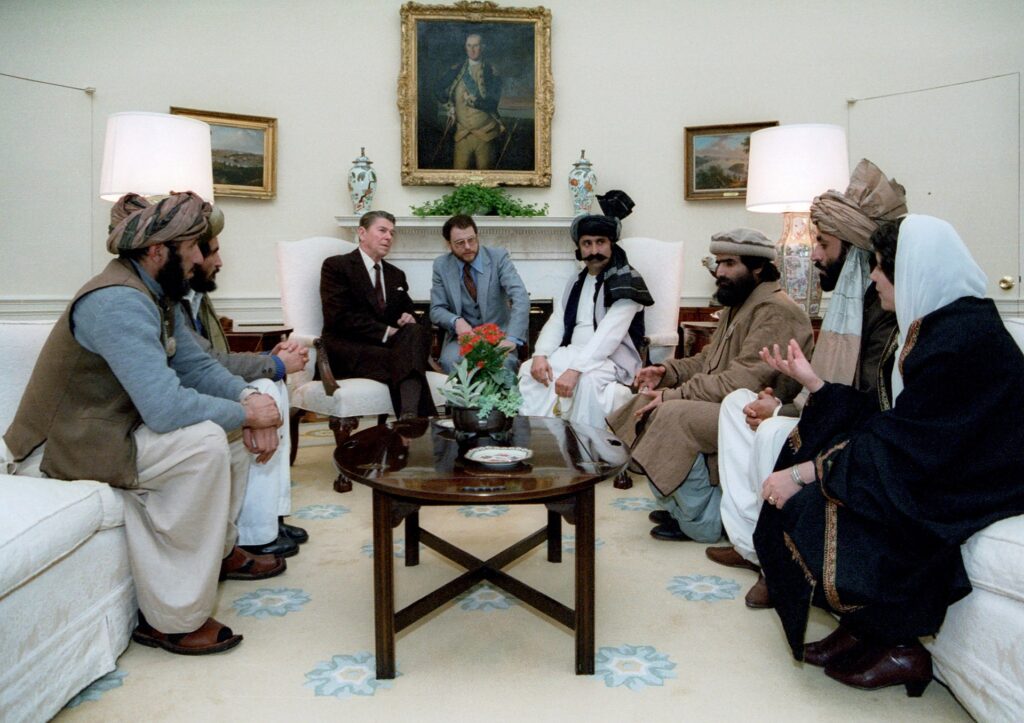
BJ: There was only one objective in that war and that was to defeat the Soviet Union and get revenge for Vietnam and they didn’t– nobody cared about women. Women were not an issue. There’s a great book about that by Steve Coll. It’s called Ghost Wars: The Secret History of the CIA, Afghanistan, and Bin Laden, from the Soviet Invasion to September 10, 2001, which really talks about what US policy was during the Soviet-Afghan war. It was just ‘defeat the Soviets and let Pakistan do whatever they want to in Afghanistan’. And of course it backfired.
AA: Okay. And so then the mujahideen was in charge. They were egregiously, mismanaging everything. Nobody really liked them, right? They weren’t popular. You said like the majority of Afghans…
BJ: No, they were different factions. They were all fighting each other.
So during the Soviet Afghan where the mujahideen were supposedly on a united front against the Soviet occupation. Once the Soviets leave and the war is over, these different mujahideen factions now turn their guns against each other and it turns into an ethnic war because all of these different mujahideen factions represented different ethnic groups, different sectarian groups. And from 1992 to 1996, you have the Afghan Civil War, which was different mujahideen groups fighting one another for power. None of them was able to emerge and gather a large national following. And of course, the Afghan people became casualties.
Now as far as women are concerned, during the Afghan Civil War of 1992 to 1996, you have a state of complete anarchy, chaos, and lawlessness. That means you had very arbitrary rapes, all types of sexual violence, very very brutal murders. And so by 1996 when the Taliban first emerged, there were some people who were kind of quite happy. One, because people didn’t, still didn’t know what the Taliban represented, but the Taliban did bring security, right? There was an end to types of extra judicial killings, those random rapes.
There was absolutely no security during the Afghan Civil War, so in many ways– I mean, I’ve heard people say that the mujahideen period was much, much worse. I’m talking about people who were there in Afghanistan during that and then during the communist period. Because during the communist period you don’t have all of these conservative regulations, strict regulations, but also you didn’t really have this kind of anarchy that existed from 1992 to 1996. And when the Taliban comes, they do bring security, but then they basically deprive women of all their rights.
AA: Mm-hmm. Yeah. Can you tell us some of the policies of the Taliban, especially regarding women?
BJ: So they come to power for the first time, they take Kabul in 1996 although they had been emerging in other provinces in 1994. They basically ban women from getting an education, getting a job, having a job, the right to move around and leave their homes unattended without a male guardian, and also the dress: they had to wear a burka and their ankles could not be showing. So if you look at a burka, it’s a very flowing garment where, if there’s a little bit of wind or something, it could easily reveal a person’s ankle. So, they set up a notorious ministry called the Ministry for the Promotion of Virtue and the Prevention of Vice, which was this notorious moral police that could arbitrarily punish women for something as minor as her ankles not being fully covered. So a woman could arbitrarily be accused of adultery with no access to due process or any type of justice.
You had all of these public executions in the soccer stadium during the Taliban period. Some of them were not televised, but there were images that appeared in the media where there was a woman–I remember there was one woman who had been accused of adultery and even her own in-laws had forgiven her. Now, there was no evidence. There was no investigation whether she had committed adultery or not, but whatever the case was, her in-laws forgave her. But the Taliban executed her publicly in a soccer stadium to make an example of it.
So this is what you have. You have… I don’t even wanna call it a stone age, but the policies that they implemented in the nineties when they first came to power really has no place, is nowhere seen in Islam and Afghan culture or anywhere else. It’s very very important to see the Taliban for what they are: it’s not an Islamic movement, it’s not an Afghan movement. It’s simply a proxy force of Pakistan’s military intelligence.
One thing I forgot to mention is Afghanistan and Pakistan had a long irredentist dispute over territories claimed by both countries ever since Pakistan emerged in 1947 because in the late 19th century, the British severed a significant part of Afghan territory and gave it to India as part of making Afghanistan a buffer zone. Afghanistan’s governments have always wanted to reclaim those areas, but those areas became part of the country of Pakistan in 1947. Afghanistan and Pakistan almost went to war on several occasions in the fifties and sixties.
So you have this bad blood between Afghanistan and Pakistan, but I think it’s important to see the power imbalance between these two countries. Pakistan is a much bigger country. It’s a nuclear power. It has the sixth largest army in the world. Afghanistan is relatively much poorer, much weaker. And you know, Afghan rulers also didn’t play very smart politics. So the practice of creating proxy forces to have influence or to install puppet governments in Afghanistan has been a long held policy of Pakistan dating back to the seventies, and the Taliban are of course a creature of that.
AA: Okay. Well the last chapter in this story would be starting with 9/11 and the American and international involvement in Afghanistan, and then their recent withdrawal in the current situation. Can you walk us through like the past 20 years or so?
BJ: Yeah. So with 9/11 we see a new chapter opening in Afghanistan with the collapse of the Taliban regime. Now, the Taliban were overthrown from power, but they were not defeated because they simply retreated to Pakistan from where they originally emerged.
And the War on Terror… Afghanistan became the epicenter of the War on Terror, but it’s important to understand that the real war should have been in Pakistan where the Taliban were able to easily retreat back to their base of support. Of course, Pakistan officially signed onto the War on Terror and decided to become an ally of the United States, but they were playing a double game. They continued to support the Taliban.
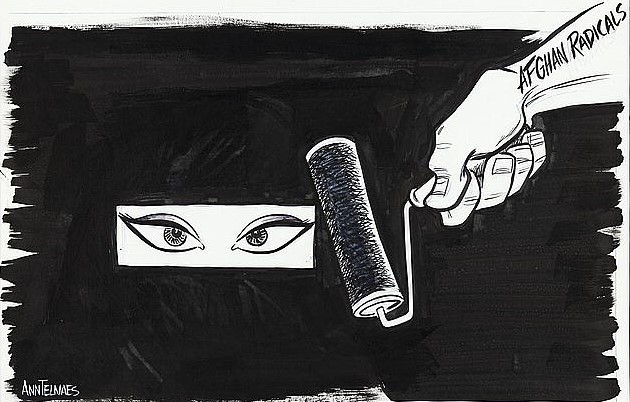
Now, when it comes to the women of Afghanistan, Afghan women were used as a propaganda tool to generate support in the West for the War and Terror, right? ‘We’re going to liberate Afghan women. This is a war for the women of Afghanistan.’ You saw First Lady Laura Bush, the first lady of the UK, Tony Blair’s wife, Cherri Blair, making all those comments. And all of a sudden, you know, everybody was talking about liberating Afghan women and you had all types of feminists coming in and supporting that, critiquing that. And so Afghan women became a pawn in the War on Terror, but at the same time, there were many positive things that happened because of that intervention.
This is a chapter that I’ve actually been an eyewitness to. For example, in 2003, my father was appointed the Minister of Interior. Now, my father is a huge feminist, and he’s a product of 1960s Afghanistan when the country was very open to women’s rights. One of the first things he did was he appointed Afghanistan’s first female governor and appointed women to the police force.
So there was a lot of hope in those early years about a new age, and Afghanistan was finally gonna come out of decades of war and rebuild the country. We were going to reconstruct the country. But unfortunately, one policy that the United States decided to pursue is that they re-empowered those same warlords that had torn up the country in the 1990s. And so they were able to reinvent themselves as bureaucrats. Unfortunately that did not really allow for a new beginning. So you have an Afghan government that eventually became not very competent or really playing a role in rebuilding the country. Also, the international community that was so heavily involved in the reconstruction of Afghanistan… there was no really clear, coherent strategy. All the different countries that were involved, they all pursued different policies. And of course, Pakistan continued to play a double game.
Now, amidst all of these problems, women did reemerge into public life. So it’s very important for me to point out that the US-led military intervention after 9/11 was really the catalyst for the restoration of women’s rights in Afghanistan. Over a 20-year period you see a whole new generation of Afghan women getting educated, getting great jobs, becoming breadwinners in their families reemerging into public life, but it was all very fragile because new laws were implemented in parliament. Like there was a law on the elimination of violence against women. Well, that law or the idea for that law was very much supported with the heavy involvement of the international community. There was really no indigenous political support, meaning the powers that be, because you have to understand that by 2001 Afghanistan’s political leadership by that point in time had been heavily influenced by Islamist tendencies. And so the country that emerged in 2001, although it was a new beginning, the international community was involved in terms of Afghanistan’s indigenous politics. We see the insertion of more conservative values, the domination of conservative values, the domination of mujahideen who all had Islamist backgrounds.
So although the international community was championing women’s rights (which was very important within the country), you didn’t really have a leadership that was genuinely committed to it. What that meant was that whenever the international community left Afghanistan, everything was gonna come crumbling down, and that’s what happened.
Then in 2014– so President Karzai, who was the president from 2001-2014, he’s known to have very conservative views. He was a very close friend of the mujahideen and warlords and he was never a big champion of women’s rights. Now, his successor Ashraf Ghani, who came to power in 2014, what I would call it– he kind of made women’s rights as kind of like window dressing. So he will appoint a lot of women to key positions, some of them very young, other women that were a little bit older, and make himself to be a champion for women’s rights, but they were both heavily invested in keeping those reactionary forces happy because they were the dominant political voices. That meant that not really going too far in promoting women’s rights.
Now you might be thinking, “well, what if he did appoint women to very top positions?” He did. But it’s important to understand that when you’re promoting women’s rights, promoting a few elite women to governmental posts is really not the only way to promote the idea that women belong in public life. For example, in 2015 I started the first Gender Studies program in Afghanistan and I reached out to the First Lady, Ashraf Ghani’s wife, to support it and she said “I can’t support this because it’s a Western invention.” And I said, “well, look at the history of Afghanistan. The history of women’s rights in Afghanistan did not begin after 9/11, it goes all the way back to the late-19th century.” So, you know, she was more interested in not rocking the boat, and what I mean by that is not making those conservative voices angry.
Besides that a lot of my female students at the American University of Afghanistan went on to graduate school. Some of them opened their own businesses, began their own careers. So, you know, it would be wrong to say there was no progress because there was, but there was also a lot of exploitation by NGOs, by a lot of these carpetbaggers; people who really jumped on the bandwagon of liberating Afghan women and enriched themselves in the process.
It became a big business as well, but there was genuine progress. I was there, I worked at the university for eight and a half years, and I saw a brand new generation of Afghan women who were hungry for education, for jobs, for careers. Now, I see a lot of those women are here in the United States or in Canada or Europe or other places when–if the Taliban had not come back to power–they would probably be in Afghanistan doing all the things that they’re doing outside of the country.
AA: Hmm. So what happened to the women who were left behind? I mean, these are the women that we hear or read about rather in editorials in the New York Times and please don’t forget about us. What can be done now for them?
BJ: Well, I mean, women’s rights was legally enshrined in the 2004 Constitution. So Afghanistan’s first constitution was adopted in 1923, and then you had several other constitutions and in 2004, a new constitution emerged where women had significant rights. But the Taliban have no regard for that or for any type of constitution, they rejected the old Afghan constitution. It’s very sad for me to say, but saving Afghan women is no longer politically expedient.
In 2001, it was part of the strategic calculus in the War on Terror. It’s no longer…the global discourse has shifted. Afghan women were a convenient strategic issue in mobilizing support for the War on Terror in 2001. That’s no longer the case. So women who are saying, you know, please don’t leave us behind, please don’t forget about us. I really think that’s going to fall on deaf ears in places like Washington because Afghanistan is really no longer on the radar.
But I don’t think that the Taliban are going to succeed in this way. I don’t see them succeeding. You know, they are very hungry for recognition. That has not happened yet. But I do think that one of the reasons why Afghan women are in these dire straits, a lot of it does have to do with the failures of that 20-year war effort. After the return of the Taliban to power, you really see this normalization of the Taliban in the international community. During the war, they were the enemy, right? And now it’s like, “well, we have to talk to the Taliban,” you know? Very senior members of the British military community have even called them “good old country boys with a code of honor.” So, the problem isn’t just the Taliban and what they’re doing. The problem also is you have very powerful countries, very powerful actors, legitimizing them and normalizing them by always meeting with them, inviting them to big galas and very high profile meetings, giving them all kinds of publicity and photo opportunities. That’s how you normalize insurgents, terrorists.
It’s very sad for me to say, but saving Afghan women is no longer politically expedient.
So the international community is kind of a willing participant in the Taliban oppression of Afghan women, and it’s very difficult to see, and I’ve written about it and I’ve voiced my concerns about it. As we know with the history of anything, powerful actors dictate the narrative. And the narrative that we’re seeing right now is that the Taliban oppression of Afghan women is normal standard business. And that’s very very alarming. What’s even more alarming is we have seen no single female head of state or any prominent female leader anywhere in the world come out and take a firm stand and make a forceful statement saying the deprivation of Afghan women’s rights by the Taliban is unacceptable. Again, because it’s no longer politically expedient. And that’s been very very very disappointing.
In the year 2023, you have a lot more women leaders than you did 20, 30, 40 years ago and you see Afghanistan as the only country in the world where women are being deprived of their basic human rights, the basic rights that they have been given in Islam…and yet nobody cares.
AA: Mm-hmm. I’ve been reading too, since they took over in 2021 and it seems like at first there was kind of this language to the international community from the Taliban like, “it’s not gonna be like it was before.” They were seeming a little bit more progressive, but then do you think that that was strategic just to kind of placate people, but then they always intended to roll back women’s rights? Because they have since, right? It just seems like one after another and each time they do it, there’s an article about it in the media and then nobody’s talking about it anymore. And now women– what is the maximum age that girls could go to school in Afghanistan now? 16?
BJ: I think it’s 12.
AA: 12?!
BJ: So adolescent girls cannot go to school. It’s been over 500 days that teenage girls have been banned from secondary education. And also with universities as well, there was something to the effect that they can’t take university exams. So I think the Taliban took advantage of the fact that the US was really really wanting to leave Afghanistan. They wanted to end the war.
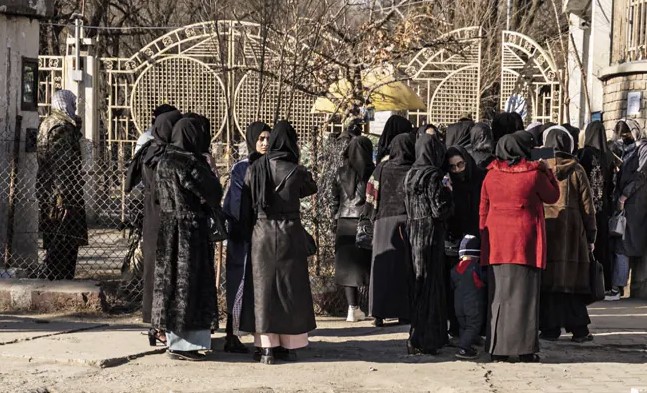
I mean, the Taliban always took advantage of the fact that there was war fatigue. The US wanted to leave, and they took advantage of the fact that they were given all this legitimacy. There was also the agreement that was made with the Taliban by the Trump Administration which really did not set any serious conditions for withdrawal. And of course the Taliban took advantage of that. So at that point they could have said anything and nobody really cared. But yes, that’s been their tactic all along: promise things. But only those who have no familiarity with the Taliban’s track record could possibly fall for those gimmicks.
They were never serious about upholding women’s rights. So that whole peace deal or whatever it was called, it was called a peace deal: it was not a peace deal, it was a withdrawal deal. It was really just a mockery that the Trump administration got into. And Afghan women– you know, there was a lot of warnings issued by those familiar with the Taliban, but again, they fell on deaf ears because there was such a strong determination to end the war in Afghanistan, and it was being called a forever war. But anybody familiar with the Taliban and their background and their ethos should not believe for a second that they had any intention of upholding women’s rights.
AA: So is there any hope for a grassroots movement in Afghanistan to overthrow the Taliban? And if so, what could a person like me, just a citizen of the United States who cares about Afghan women…is there anything we can do to support, to show solidarity, to show emotional support, but also to support, you know, financially or legally in any way? What could we do?
BJ: I think one thing is to help keep Afghanistan in the news. To have podcasts like this to spread the word. Another is to write letters to your elected officials about all of this normalization, the whitewashing of the Taliban. Put pressure on your elected officials, write to your congressmen or to your senator, respond to newspaper articles that attempt to do that.
So I think there’s a lot of advocacy that could be done, right? Putting public pressure on these types of schemes, highlighting the fact that ‘why aren’t women heads of state?’ Speaking out. Why isn’t like AOC or Nancy Pelosi, women who are very successful, who… I mean women of Nancy Pelosi’s generation, I can’t imagine how many struggles she had to get where she is. So I think start at home and call out. I think we have to start there and say, ‘hmm, why isn’t there condemnation?’ You know, just because Afghanistan is no longer geopolitically, strategically important to the government, it’s no longer a high priority issue. But what’s happening kind of goes beyond that. It’s beyond just a political issue, things like that. And I think also another way is helping Afghan refugees here who still have families in Afghanistan.
As for a grassroots movement? Absolutely. I think that might be our only hope at this point. But what you see is that, for example, recently there was an Afghan professor. He was a man, and he actually publicly protested about all the educational bans on women, and he’s been taken into custody by the Taliban. So there’s great personal danger within Afghanistan for people to protest and to make public displays against these policies, but there’s a lot that could be done outside and I think the first place is that trying to keep this news alive and relevant in the news.
One thing that I’ve long advocated for is creating an endowment at a university for Afghanistan Studies or endowing a chair of Afghanistan History, something like that. Putting money into that would be very important because Afghanistan’s history is being erased now by the Taliban. And just there, there’s a lot that could be done from the outside.
Right now I think it’s very dangerous, but I think that the way that the policies are being implemented by the Taliban, I think it’s very difficult for any human to have any sense of normalcy under that type of regime. So eventually I do see grassroots regimes emerging. When that’ll happen? It’s hard to say given the current conditions, but it seems to me that Afghan women are now “it’s Afghan women against the world.” They’re on their own, and that’s very very sad because they should be getting help from women leaders–at least a verbal condemnation–and we haven’t even seen that.
So I think in the past 20 years when the world was with Afghan women, we saw a lot of progress, and now they’ve been completely abandoned. Regardless of what type of atrocious or policy the Taliban implements, nobody cares. Not only does nobody care, but the Taliban are actually being rewarded for it by getting a lot of… they have not been formally recognized as the official government of Afghanistan, but I think that when you invite them to high profile meetings, when you give them all this publicity, it’s a form of soft recognition and that’s very dangerous. And that emboldens them, that gives them confidence to implement these policies.
AA: Well, I’ll be watching. I am following Afghanistan in the news and we’ll be watching so that if we see any signs of women rising up, men and women rising up against the Taliban, that we’ll be able to support them.
I’ll be following your work as well Dr. Jalali and I’m so grateful for all of your insights and all of this new information. I’ll be following your work as well, and just wanna thank you so much for being here today, Dr. Bahar Jali. Thank you
BJ: Thank you so much for having me, Amy.
a brand new generation of Afghan women
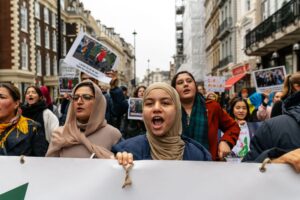
hungry for education, for jobs, for careers.
Listen to the Episode
&
Share your Comments with us below!

